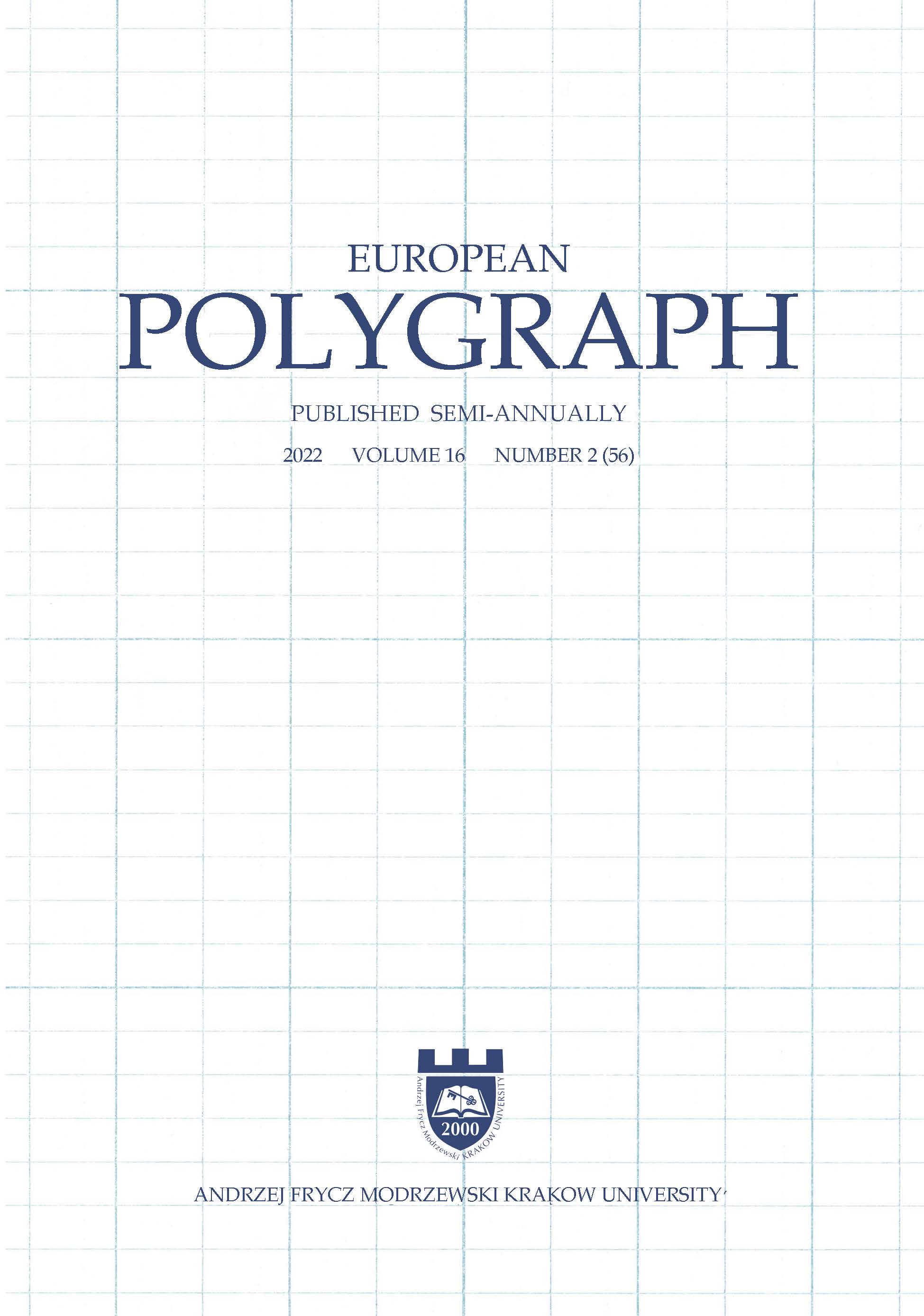Attempt at Detection of Deception Based on Records of Physiological Reactions Remotely Captured with FaceReader Software. Part 1
Attempt at Detection of Deception Based on Records of Physiological Reactions Remotely Captured with FaceReader Software. Part 1
Author(s): Jan Widacki, Bartosz Wójcik, Anna Szuba-BorońSubject(s): Law, Constitution, Jurisprudence, Criminal Law
Published by: Oficyna Wydawnicza KA AFM
Keywords: FaceReader; FaceReader (Noldus); detection of deception; facial expressions; microexpression; Noldus
Summary/Abstract: Strong emotions are among others manifested in the expressive movements (facial expression). Facial expressions are natural and universal by nature. They do not depend on ethnicity, culture, social status, age, etc. Nonetheless, humans are sometimes capable of controlling their facial expressions and hiding their emotions. Simulating emotions is a fundamental acting skill. However, controlling facial impressions takes time. The onset of such a control is delayed by anything from 0.25 to even 0.1 second – the period when the authentic facial expression, adequate to the emotion is demonstrated – and therefore remains imperceptible to an external observer. This short-lived facial expression observed in that short meantime is known as microexpression. FaceReader, designed by Dutch company Noldus (established and directed by Professor Lucas Noldus), is a software package for automatic recognition and analysis of facial expression. As its diagnostic value for validity as well as reliability, that is the level of correct indications, remains unknown, we decided to determine it experimentally and have chosen to run an experiment comparing its diagnostic value with that of a traditional polygraph examination.
Journal: European Polygraph
- Issue Year: 16/2022
- Issue No: 2 (56)
- Page Range: 38-51
- Page Count: 15
- Language: English

